Ryan Hall's Blog, page 317
November 30, 2015
The Visionary: An Interview with Vin Lananna
Former collegiate coach Vin Lananna played a key role in securing the bid for the 2016 IAAF Indoor World Track & Field Championships in Portland, Ore. He will also be the head coach of next summer's U.S. Olympic track team. Photo: Andy Nelson
A perennial winning coach at the University of Oregon, Stanford, Dartmouth and Oberlin College, Vin Lananna is now one of track and field’s foremost impresarios, having organized the past two U.S. Olympic Trials, the past three NCAA outdoor championships and the 2014 IAAF World Junior Championships in Eugene, Ore., in his current role as president of TrackTown USA. Lananna, who also serves as an associate athletic director at the U of O, won bids to host the 2016 IAAF World Indoor Championships in Portland, Ore., in March, and is bringing the 2021 IAAF World Championships to America for the first time—in Eugene, of all places. But he hasn’t hung up his stopwatch for good: Lananna, 62, will also be head coach of the U.S. track and field team at the 2016 Olympics in Rio de Janeiro.
How’s Portland 2016 coming along?
Portland 2016 is going well. There’s an enormously strong reception, especially from the city officials, and I think the entire state of Oregon has embraced it. When I was in Beijing there was enormous interest and enthusiasm from different federations from around the world who have really expressed a great deal of enthusiasm and excitement for coming to the United States for the World Indoor Championships. We think we’ll have a really great indoor event, and I think the athletes will be received warmly and there’ll be great competition.
Why is it important that the IAAF World Championships take place on American soil?
It’s our obligation and our honor to host the Worlds in a country, which, on the global stage, is central to the sport of track and field. I think that the United States has a unique responsibility to do our part to develop and to perpetuate the popularity of track and field in our own country and across the globe. More selfishly speaking, it’s just like you would not want to have a great football team or soccer team and never compete in your home community.
Why are the World Championships so rarely held in the U.S.?
I think I would best quote Allyson Felix, who came with us in Monaco when we presented, and she said when she first heard that the United States was bidding for the World Championships and for people like herself and the next generation to have the opportunity to compete at home, she said to herself, it’s about time. And I think it is about time that the United States stepped up. We’ve formed a partnership with USA Track and Field and we feel as though we’re going to present them something very special. We have five and a half years now to build up the interest in the United States, and I feel a certain level of urgency. As to what’s the reason? I think there are a lot of reasons. Some of them are financial. Some of them are not having a facility. Some of it’s the corporate sponsorship. Some of it’s our lack of government support for athletic events. So I have to applaud the people of the state of Oregon in particular for embracing this opportunity.
What’s the secret to putting on a successful event?
Our mission is always to make every event that we do athlete-centric and athlete–focused. And we do. But secondly it’s important that the spectators have an exciting experience that’s easily accessible and entertaining. In the United States people only have so much discretionary time, and we need to streamline our events so that people can come and enjoy them rather than have all this dead time in between events. And I think another element that we don’t generally take strong advantage of is engaging our media partners. Whether it’s digital, broadcast, print media or social media. We will do our best to ensure that we change with the times and provide the great experience so that we have a great story that centers around the athletes.
Why is the elite distance-running field so deep these days?
About 20 years ago, many of the coaches in the country got together, wondering why we weren’t better on the world stage. Those reasons were funding, competitive opportunities and having good training partners. If we put all those things together, we thought we should be able to channel that energy into high-end performances. I think we had hit a low back in the early ’90s, and I think now you can see with the distance runners that they have reemerged and reinvented themselves.
Why are you at the center of everything track-related?
Lots of people have talked about the World Championships; you’ve got to get somebody that’s really going to drive it. Somehow I often find myself in that role— probably because I’m a glutton for punishment. But seriously, I care deeply about our sport. I’ve learned so much from the sport of track and field personally and professionally. I believe it’s the foundation for all other sports. I believe that it’s exciting. I believe that access to the sport is not as complicated as some of the other sports, and I think that we just have to be sure we stay focused on the right things. And the right things are not forgetting that we have spectators and media that we have to pay attention to.
What will you do to ensure the 2016 U.S. Olympic team is successful?
If you have great athletes and a great team, you need to create an esprit des corps. The athletes need to be confident in their own performances but also they need to be able to do the things all along the way to compete at the highest level—from their training and their interaction with their coaches to picking the right competitive opportunities for them so that they’re well prepared to peak at the appropriate time. And we’ll create a great, exciting environment at the Olympic Trials. I’m in the fortunate role of handling them at Hayward Field, and hopefully that momentum spills over and sets them up appropriately for Rio. The thing is, the more popular and the more recognizable that we can make our athletes within our own country, it takes the hopes and dreams with the rest of the country with them. And as we know, every time you have a team, whether it’s the New York Yankees or the United States of America Olympic track and field team, there’s a lot that goes with it if you’ve got a great community behind you. This is a national quest and sense of national civic pride that we have the best team in the world, and that’s what we need to make sure we stay on top of.
Eugene has faced criticism for its anointment as the epicenter of American track and field. Why is it worthy of being the sport’s hometown?
I think you have a certain expectation when one comes to Eugene and competes at Hayward Field. That the athletes and spectators are going to have, the media’s going to have, and I think everything about it shows our sport well on a global level. Now, I’m not so provincial to think that we’re the only place that should host the sport of track and field. Yes, I would absolutely like to see it in greater media markets and larger populations. But while we may not have the number of people and the infrastructure that some of these larger cities have, we’ll create a great, great environment for the sport of track and field. And you have to focus on what your product is, not what someone else’s product is.
So I think that we can take this model, and what my hope is—and why we’re instituting this TrackTown Summer Series—we believe we can create that same excitement around other media pockets. We will continue to focus our attention on the athletes and creating great products and having the Hayward-tested, TrackTown-approved format. And that’s the mantra that we’ll take on the Summer Series that we plan to put into place next summer.
This has been a five-year ramp-up. We didn’t wake up last week and decide to do this. Everything we do has a long-term plan. I like to look over the horizon and not just think about what we’re doing in three weeks, but what might this look like in five years, 10 years. That’s why we did the World Championships, and that’s why all these other initiatives have been built around this line in the sand in 2021. It is an absolute goal for us to shift the paradigm of how we do the sport of track and field in this country. And we have an absolute timeline. We have a five-year ramp-up and buildout before we use the 2021 platform to have the United States be not only the best track and field country in the medal count, but also be the best track and field county with regard to the events and with regard to the popularity in the sport.
What’s the secret to successful coaching?
When you coach at a number of different places, you find there are some fundamental areas of common ground in all of these athletes. I think the whole key is individualizing the needs of each athlete and catering your program to them as opposed to having the athlete cater to the program. Then, if you have a good product, like anything else, you have a better opportunity to sell that, and that’s what good coaching’s all about: Be able to say what you’re doing, have people believe in it and be confident—and then get out of the way and let ’em compete.
What are track’s biggest challenges?
I think the challenges are in our ability to be able to unify with different constituencies, which are necessary for the sport to be successful. Let me give you a specific example: We have these great youth programs. Lots of little kids compete in these different youth Olympics, junior Olympics and all that. Then you go to a high school level and you have tracks everywhere. Almost every high school has a track and a bunch of kids competing. Then you have the greatest development program in the universe, the college program. I don’t think any country, Olympic group or federation spends more money on our sport. Division I programs—I’m not even talking about II and III—spend somewhere between 500 and 600 million dollars per year. And I’m not talking about facilities, I’m talking about coaching, equipment, competitive opportunities, training groups, medical, travel. Show me any organization that spends that much money on our sport. And out of that program we develop our Olympic program, the number-one team in the world. The challenge we have is getting all these different communities to come together. So if we could actually get all the officials, the youth programs, the USA Track and Field associations, Long-Distance Running committee, the walkers to all go in the same direction, we have this great opportunity to be able to commercialize that. And we’ve not been able to do it, because everybody’s pulling in all directions. I’m not saying everyone has to hold hands—because there’s going to be turf wars, land grabs and all of that—but we just seem to be going in so many directions that we’re not able to capitalize on what we’re known for, which is having these great, phenomenal athletes.
How prevalent is doping from your vantage point? It’s always a bit of a mystery to fans.
Well I don’t know that my opinion is something that I should put forth as being an expert in the area, but … our athletes are tested so much. More than in any other sport. I think that we have to recognize that these are great athletes and therefore they’re going to achieve really great things. We can only spend so much time speaking about the positive test results rather than talking about the number of people who are tested that are no problem. I don’t bury my head in the sand and say that everybody’s doing everything 100 percent correctly, but I think we have good anti-doping mechanisms in place, we just need to be sure that we are transparent with that information. Because it does hurt us. When people in the stands doubt that something extraordinary they see is not really extraordinary, it hurts us. And therefore we need to be careful—and people need to be careful with their comments. And I will say the other thing that is a problem for the sport is the negativity of those people who speak anonymously about these things, and how hurtful and how harmful that is for a sport that they love. Everybody’s really passionate, but we need to make sure that our passion is channeled in a way that actually gets us the result that we want to get.
The post The Visionary: An Interview with Vin Lananna appeared first on Competitor.com.
November 29, 2015
Stuck on the Treadmill? Boost Speed With These 3 Workouts
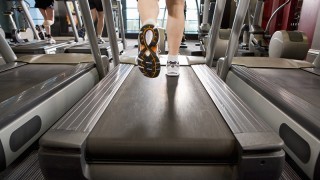
Photo: Shutterstock.com
Running on a treadmill is an unfortunate reality for many runners during the winter months. With frigid temperatures, slippery roads and snow drifts, it’s often the safest (and more comfortable) alternative.
But there’s a reason it’s called the “dreadmill” or a hamster wheel for humans: it can be boring!
Since a treadmill is often your only choice before an important race, it makes sense to have fun with your workouts. After all, the faster sessions in a training program are what help you improve your speed, economy and ultimately your race performances.
If you’re stuck inside on the dreadmill, use these three workouts to reduce the boredom of running inside. Instead of passively watching television or staring at a wall in your basement, these are designed to increase engagement with the run itself so you can have fun and gain fitness at the same time.
Workout #1: “Boil the Frog”
There’s an old saying that if you place a frog in boiling water, it’ll jump right out to save itself. But if you put the frog in lukewarm water and gradually raise the temperature, she won’t even notice the slowly escalating temperature of the water.
While this particular piece of folklore has been proven false, we can still model a workout after it. To start, run at an easy pace for 10 minutes. After you’re warmed up, increase the pace by about 5-10 seconds per mile every 3 minutes based on the duration of your run.
You can also make this workout more difficult by simultaneously increasing the incline of the treadmill by half a percent.
After several miles of increasing pace and incline, reverse the order and slowly transition back to your easy pace and the starting incline.
You’re obviously not a frog and you’ll definitely notice the increasing difficulty of this run—which is called a progression. It can be used in place of more traditional tempo or marathon-paced runs and is a great session for runners training for the marathon or half marathon.
The real benefit of a workout like this is to teach runners to run fast when they’re tired. Running fast on fresh legs is easy—but can you keep running faster and faster with mounting fatigue?
It’s a critical skill and one that will serve you well during your next race.
RELATED: Workout of the Week: Progression Runs
Workout #2: The Running Power Hour
Load a playlist with with sixty 1-minute songs and run a workout based on that lineup, alternating between fast and slow paces.
This type of workout is traditionally called a fartlek—Swedish for speed play. First, make sure you warm up with some dynamic stretches and at least 10 minutes of easy running.
When the playlist starts, alternate between a comfortable pace and a faster pace. The beauty of this workout is that there’s flexibility to run as fast as you want.
The main benefit of the running power hour is the ability to change paces frequently. This happens often in race situations so it’s a valuable skill to practice during training as well.
And the side benefit? You get to listen to 60 abbreviated versions of your favorite songs!
Workout #3: iPod Roulette
Warning: this can be a challenging treadmill workout. It’s great for runners who want to run faster but don’t have a lot of time.
The first step is to make a playlist of about 10 songs that are each about three minutes long. Make sure that half the songs are upbeat, high intensity songs and the other half are more mellow.
Start the workout with a warmup routine and at least 10 minutes of easy running. Set your playlist on random or shuffle and you’re ready to go! When an upbeat song starts, run fast. When a mellow song starts, run slow.
Don’t be fooled: this workout will test you. Occasionally, you’ll run fast for two or more songs in a row, meaning you’ll have to pace yourself and be a bit more cautious than you would for a running power hour session.
Choose to run at the following paces:
Marathon
Half Marathon
Tempo
10K
These paces are challenging, but manageable. And since you may be running “fast” for 5-10 minutes at a stretch, it’s wise to be more conservative.
This workout teaches the brain to handle and accept uncertainty. Too often we run structured workouts where we know exactly what’s coming. But in a big race, you may not know when your competitor is planning a surge or when the next big hill will jump out at you.
Get comfortable with the uncomfortable feeling of uncertainty and you’ll race faster.
Running through the winter on a treadmill is nowhere near as fun as running outside with the sun shining on your face. But these engaging treadmill workouts can help spice up your winter training when it’s too uncomfortable or dangerous to venture out.
RELATED: How to Run Your Fastest 10K Ever
* * *
About the Author:
Jason Fitzgerald is the head coach at Strength Running, one of the web’s largest coaching sites for runners. He is a 2:39 marathoner, USATF-certified coach and his passion is helping runners set monster personal bests. Follow him on Twitter @JasonFitz1 and Facebook.
The post Stuck on the Treadmill? Boost Speed With These 3 Workouts appeared first on Competitor.com.
Photos: Double Vision—Amazing Racing Shots From 2015

Check out these amazing image sequences from PhotoRun.net, the premier photography company covering road running, track and field and cross country.
Photo Gallery
1 of {count}
Back to Start
View Larger Image
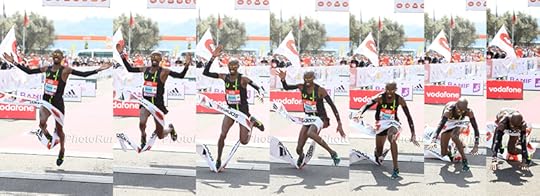
EDP Lisbon Half Mararthon
Mo Farah wins the EDP Lisbon Half Mararthon on March 22 in Lisbon, Portugal, only to get tangled up in the finish line tape. Photo: Victah Sailer/PhotoRun.net
View Larger Image
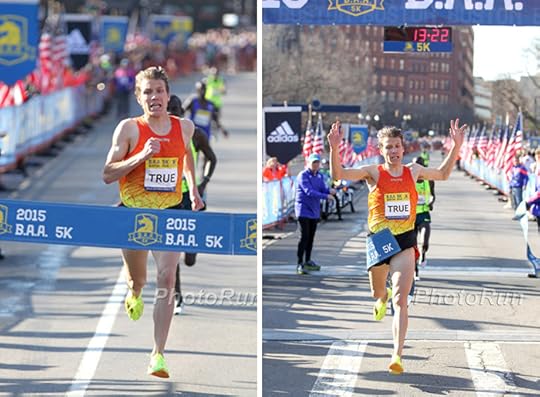
BAA 5K
Ben True wins the BAA 5K on April 18 in Boston in a new American road record of 13:22. Photo: PhotoRun.net
View Larger Image
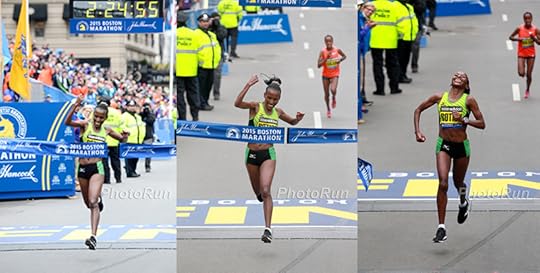
Boston Marathon
Caroline Rotich, a Kenyan runner who lives in New Mexico, celebrates her victory in the Boston Maraton on April 20. Photo: Bruce Wodder/PhotoRun.net
View Larger Image
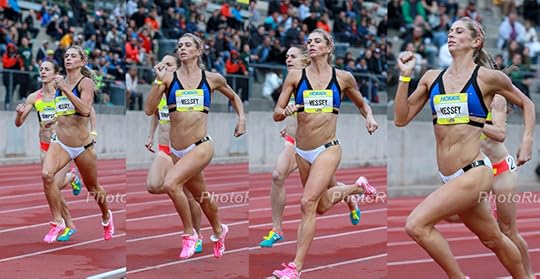
2015 Hoka One One Oxy High Performance Meet
Track and field fashionista Maggie Vessey charges down the homestretch to win the 800-meter run in 2:00.70 wearing her self-styled racing kit at the Hoka One One Oxy High Performance Meet in Los Angeles on May 14. Photo: Victah Sailer/PhotoRun.net
View Larger Image
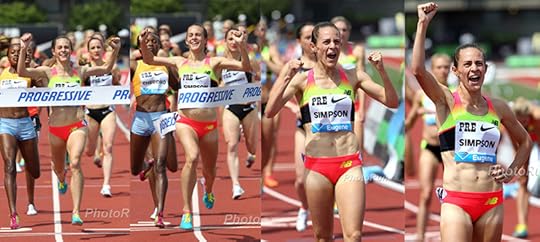
Prefontaine Classic
Jenny Simpson storms to victory in the 1,500m run at the Prefontaine Classic in Eugene, Ore., on May 30. Photo: PhotoRun.net
View Larger Image
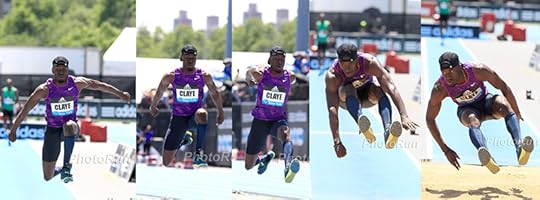
New York City Diamond League Meet
Will Claye competes in the triple jump at the 2015 New York City Diamond League meet on June 13 at Icahn Stadium on Randalls Island. Claye placed second with a best of 16.96 meters (55 feet, 7 3/4 inches). Photos: PhotoRun.net
View Larger Image
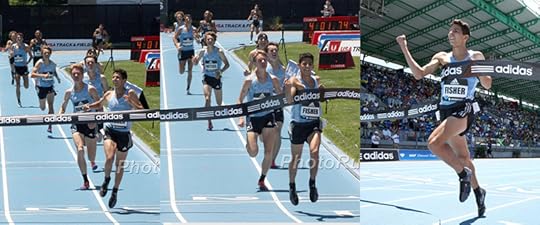
Adidas Dream Mile
Grant Fisher of Michigan won the adidas Dream Mile for the second year in a row at the adidas Grand Prix Meet on June 13 at New York City's Icahn Stadium, breaking the tape in 4:01.73. Photo: PhotoRun.net
View Larger Image

U.S. Outdoor Track & Field Championships
Stephanie Garcia (#8) and
Rachel Johnson (#5) cleared a barrier during a 3,000-meter steeplechase prelim race at the U.S. championships in Eugene, Ore., in June, but Nicole
Bush stumbled and went for a swim. (All three runners advanced to the finals.) Photos: Victor Sailer/PhotoRun.net
View Larger Image
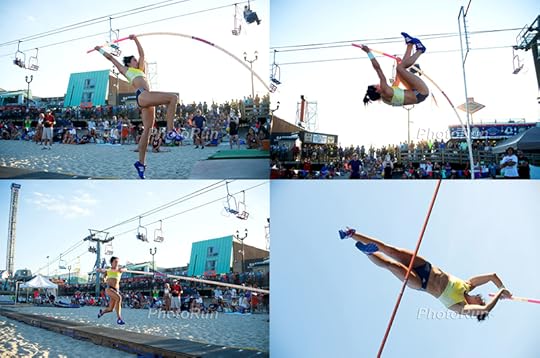
Seaside Heights Beach Pole Vault Competition
American pole valuter Jenn Suhr competes in the Seaside Heights Beach Pole Vault Competition in Seaside Heights, N.J. on July 31. Photo: Bruce Wodder/PhotoRun.net
View Larger Image
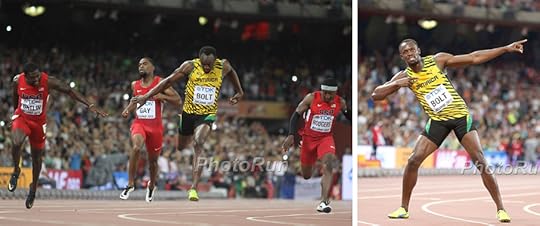
IAAF World Championships
Usain Bolt proves he's still the king of the 100-meter dash, winning the event in 9.79 seconds at the 2015 IAAF World Championships on Aug. 22 in Beijing over Americans Justin Gatlin (2nd), Tyson Gay (6th) and Mike Rodgers (5th). Bolt, the world record-holder (9.58), has won the 100 in the past two Olympics, as well as the 2009, 2013 and 2015 world championships.
View Larger Image

IAAF World Championships
American Michael Tinsley competes in the finals of the 400-meter hurdles at the IAAF World Championships on Aug. 25 in Beijing. Photo: PhotoRun.net
View Larger Image
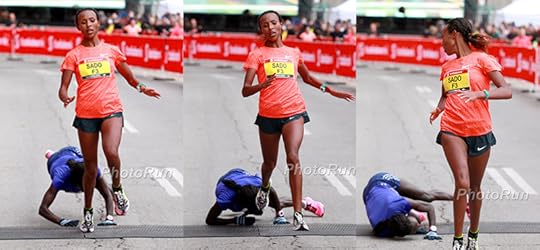
Scotiabank Toronto Waterfront Marathon
Ethiopian runner Fatuma Sado edges Kenyan rival Sharon Cherop for second place at the Scotiabank Toronto Waterfront Marathon on Oct. 18. Both runners were credited with the same time of 2:24:16. Photo: PhotoRun.net

More Galleries
The post Photos: Double Vision—Amazing Racing Shots From 2015 appeared first on Competitor.com.
Photos: Turkey’s Lycian Way Ultra Marathon
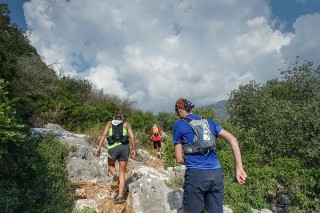
Packed with enchanting history and challenging natural features, the Lycian Way Ultra Marathon sends adventure-seeking runners through an ancient land along Turkey’s southern-facing Mediterranean coastline in the far southeastern corner of Europe. While the 509K Lycian Way is routinely listed among the top hikes in the world—along with the Inca Trail, the Camino de Santiago and the Ultra-Tour du Mont-Blanc—the Lycian Way Ultra Marathon covers half of that distance (roughly 155 miles) in six stages from Fethiye to Antalya. Ultras often take us to remote places, but the Lycian Way Ultra also takes you back to remote times as the race route crosses several ancient cities and monuments. (The 2016 Lycian Way Ultra Marathon is scheduled for Sept. 23–Oct. 2. For more information, go to Likyayoluultramaratonu.com.)
Photo Gallery
1 of {count}
Back to Start
View Larger Image
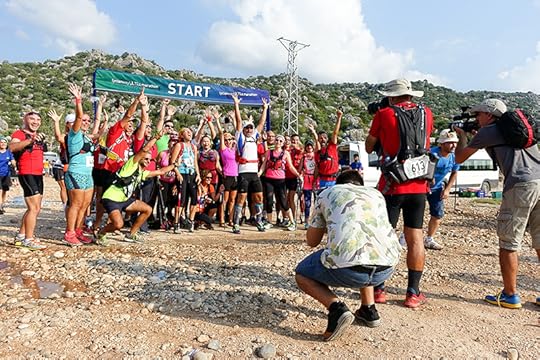
Lycian Way Ultra Marathon
Photo: Jorge Rufat-Latre
View Larger Image
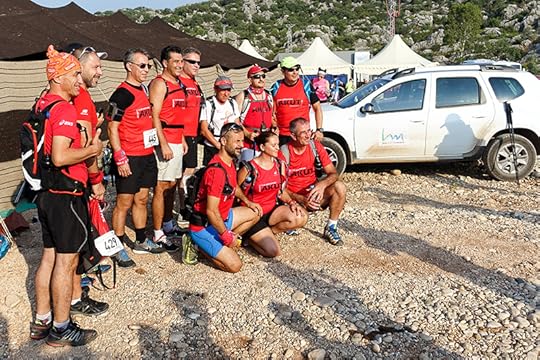
Lycian Way Ultra Marathon
Photo: Jorge Rufat-Latre
View Larger Image
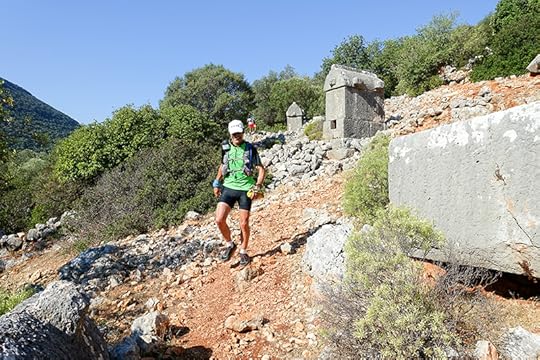
Lycian Way Ultra Marathon
Photo: Jorge Rufat-Latre
View Larger Image

Lycian Way Ultra Marathon
Photo: Jorge Rufat-Latre
View Larger Image
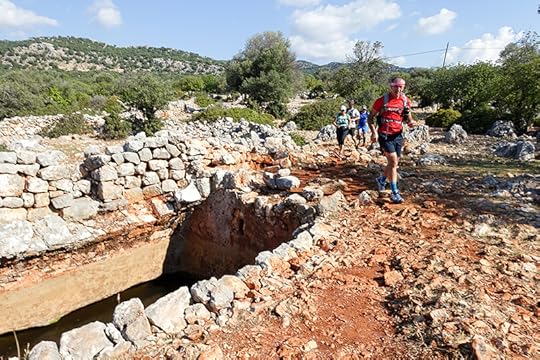
Lycian Way Ultra Marathon
Photo: Jorge Rufat-Latre
View Larger Image
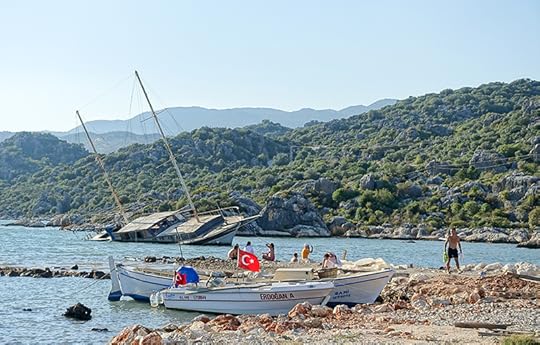
Lycian Way Ultra Marathon
Photo: Jorge Rufat-Latre
View Larger Image

Lycian Way Ultra Marathon
Photo: Jorge Rufat-Latre
View Larger Image
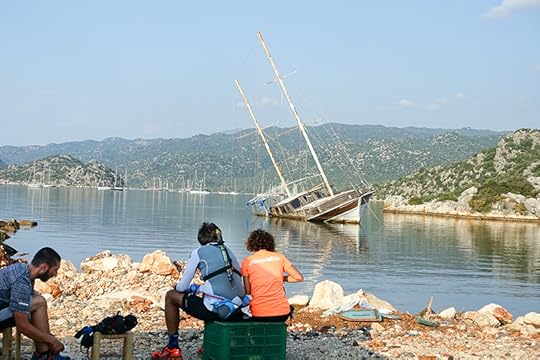
Lycian Way Ultra Marathon
Photo: Jorge Rufat-Latre
View Larger Image

Lycian Way Ultra Marathon
Photo: Jorge Rufat-Latre
View Larger Image
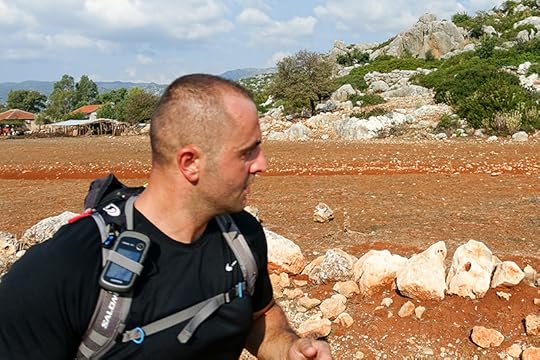
Lycian Way Ultra Marathon
Photo: Jorge Rufat-Latre
View Larger Image
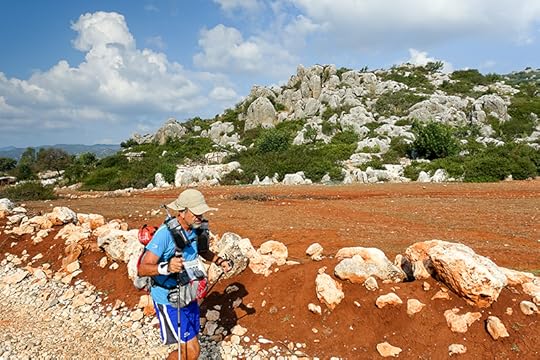
Lycian Way Ultra Marathon
Photo: Jorge Rufat-Latre
View Larger Image
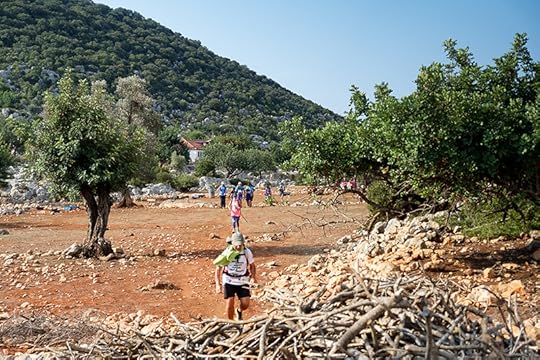
Lycian Way Ultra Marathon
Photo: Jorge Rufat-Latre
View Larger Image
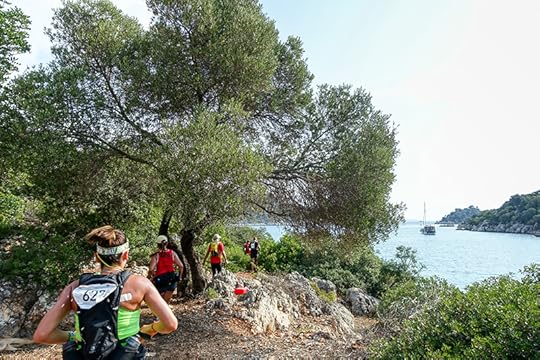
Lycian Way Ultra Marathon
Photo: Jorge Rufat-Latre
View Larger Image
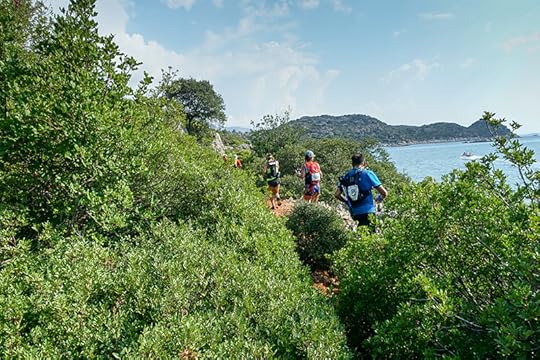
Lycian Way Ultra Marathon
Photo: Jorge Rufat-Latre
View Larger Image
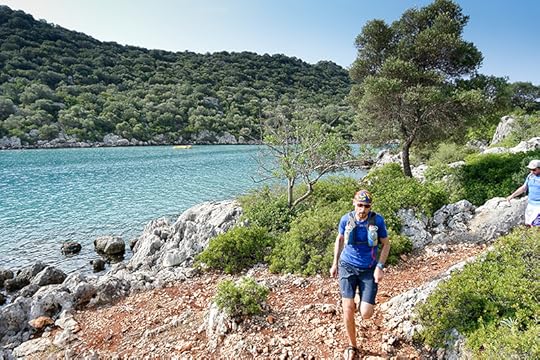
Lycian Way Ultra Marathon
Photo: Jorge Rufat-Latre
View Larger Image
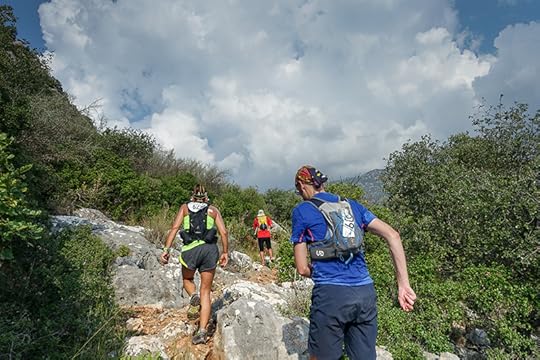
Lycian Way Ultra Marathon
Photo: Jorge Rufat-Latre
View Larger Image
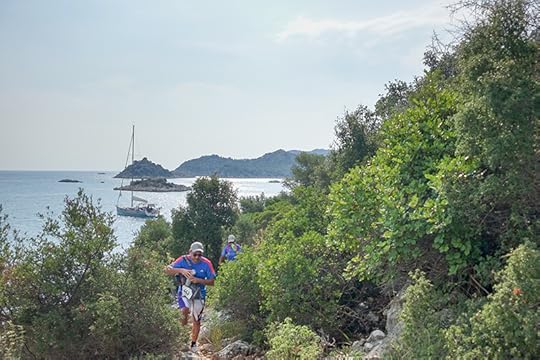
Lycian Way Ultra Marathon
Photo: Jorge Rufat-Latre
View Larger Image

Lycian Way Ultra Marathon
Photo: Jorge Rufat-Latre
View Larger Image
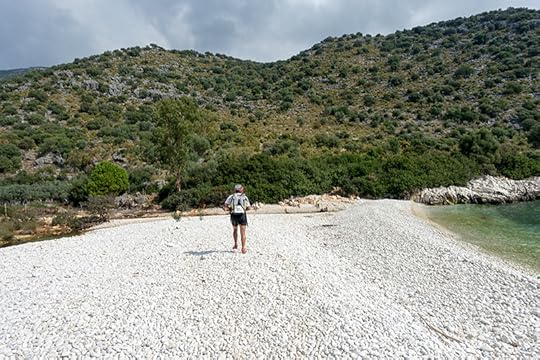
Lycian Way Ultra Marathon
Photo: Jorge Rufat-Latre
View Larger Image
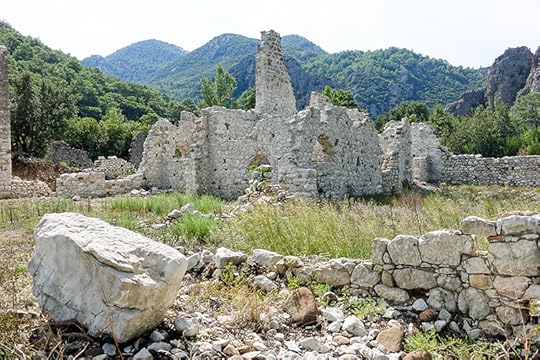
Lycian Way Ultra Marathon
Photo: Jorge Rufat-Latre
View Larger Image

Lycian Way Ultra Marathon
Photo: Jorge Rufat-Latre

More Galleries
The post Photos: Turkey’s Lycian Way Ultra Marathon appeared first on Competitor.com.
November 27, 2015
Photos: 2015 Oceanside Turkey Trot
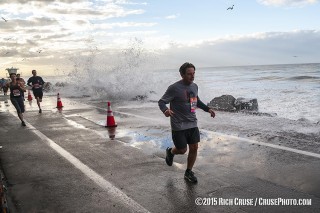
The 10th annual Oceanside Turkey Trot took place Thursday morning in Oceanside, Calif., just north of San Diego. The race, one of the largest Turkey Trots in the U.S., had about 10,000 participants take part in either the 10K or 5K.
The 10K course featured a run on the famous Oceanside Pier and all the races finished on the Strand right next to the Pacific Ocean. This year’s race had a little extra challenge—the higher-than-normal “King Tides” hit San Diego County during the race, causing waves to splash onto the Strand as runners were heading down the home stretch.
Here are photos from the day, taken by Rich Cruse:
Photo Gallery
1 of {count}
Back to Start
View Larger Image

View Larger Image

View Larger Image

View Larger Image

The 10K course took runners on the famous Oceanside Pier off the mainland.
View Larger Image

View Larger Image

An extreme high tide peaked during the race, and the finishing stretch featured a natural obstacle or two as a result.
View Larger Image

Many runners had wet, sandy shoes as a result of the extreme high tide.
View Larger Image

View Larger Image

View Larger Image

View Larger Image

View Larger Image
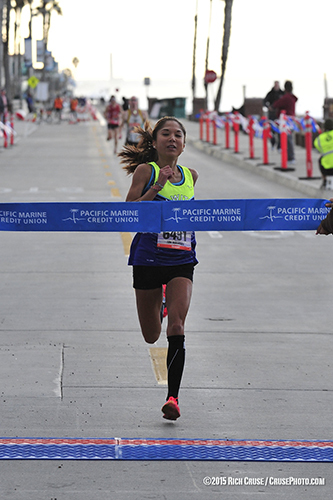
View Larger Image

View Larger Image

View Larger Image

View Larger Image

View Larger Image

View Larger Image

The day concluded with the kids run.
Related Galleries

Photos: Inaugural USA Half Marathon Invitational in San Diego

Photos: The Inaugural Franklin Mountains Trail Run 50K

Photos: 2015 Rock ‘n’ Roll Las Vegas Marathon and 1/2

Photos: Sights and Scenery From Rock ‘n’ Roll Las Vegas

More Galleries
The post Photos: 2015 Oceanside Turkey Trot appeared first on Competitor.com.
November 25, 2015
Infographic: Thanksgiving Calories Broken Down Into Minutes of Running
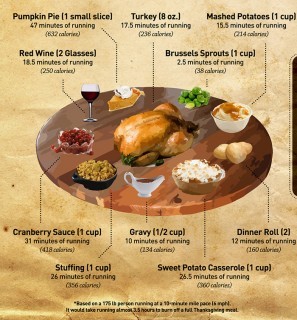
Infographic Courtesy of Mizuno Running
Turkey Trots have become a Thanksgiving tradition, inviting an estimated 800,000 people each year to run in more than 1,000 events nationwide—ranging from 5Ks to marathons—before they chow down on some serious carbs. But do you know exactly how long you’d have to run in order to burn off all the Turkey Day calories consumed later? Mizuno created an infographic breaking down each of the Thanksgiving plate staples into minutes of running required for calories burned. These calculations are based on a 175-pound individual running at a 10-minute per mile pace.
RELATED: Turkey Trot Participation Still Booming
Turkey: 236 calories per 8 ounces and 17.5 minutes of running
Mashed Potatoes: 214 calories per cup and 15.5 minutes of running
Brussel Sprouts: 38 calories per cup and 2.5 minutes of running
Dinner Roll: 160 calories for 2 rolls and 12 minutes of running
Sweet Potato Casserole: 360 calories per cup and 26.5 minutes of running
Stuffing: 356 calories per cup and 26 minutes of running
Gravy: 134 calories per half cup and 10 minutes of running
Cranberry Sauce: 418 calories per cup and 31 minutes of running
Pumpkin Pie: 632 calories per slice and 47 minutes of running
Red Wine: 250 calories for two glasses and 18.5 minutes of running
In total it would take almost 3.5 hours to burn off an entire Thanksgiving meal. For some that’d be a decent marathon PR.
RELATED: How Many Calories Does Running Burn?
The post Infographic: Thanksgiving Calories Broken Down Into Minutes of Running appeared first on Competitor.com.
Running Gear: 6 Bright Lights to Take Back the Night
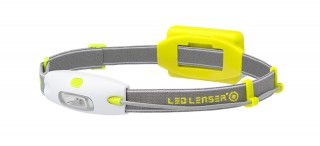
You may have noticed—night comes early these days. But don’t let it interfere with your run; all you need to do is grab one of these lights (all of them weigh about the equivalent of two bars or three gels) before heading out the door. You’ll be surprised at how quickly the miles fly by.
RELATED: Bright Running Gear for Visible Nights
Safety is priority number one, and seeing, being seen and being aware of what’s going on around you become all the more important when it’s dark. Remember to run against traffic at night, leave your headphones at home and also add some high-visibility accessories to your kit.
Photo Gallery
1 of {count}
Back to Start
View Larger Image
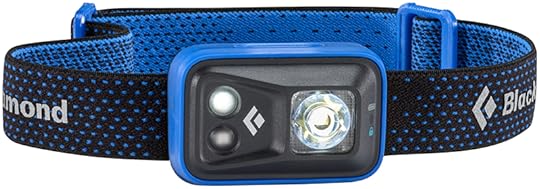
Black Diamond Spot
This waterproof light has 200 lumens of brightness, with distance, dimming and night vision (red) modes, for the darkest of trails. It can also be locked and even shows remaining battery life when you first turn it on. The Spot runs on three AAA batteries. ($40, rei.com)
View Larger Image

LED Lenser NEO
Sunrise and sunset runs get a little brighter with the 90 lumens of light in this fun (read: it comes in cool colors!) torch. It also has a blinking rear light and takes three AAA batteries. ($25, ledlenserusa.com)
View Larger Image
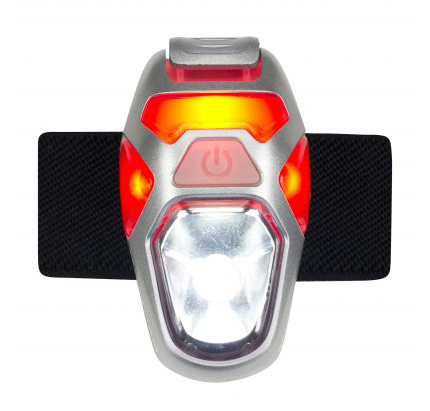
Nathan Orion Strobe
This mighty accessory gives an extra pop of light and visibility when running in urban areas. It has 30 lumens of white light plus a red strobe light, making you easier to spot. It’s weather resistant, rechargeable and comes with a belt in case you need someplace to clip it. ($30, nathansports.com)
View Larger Image
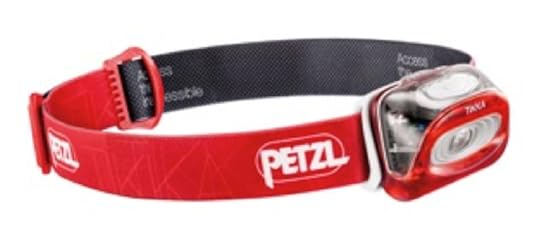
Petzl Tikka
This updated take on the innovative design from 2001 now has 100 lumens of light, with two settings and a washable headband. It’s weather resistant—dark, damp mornings are no longer an excuse to hit the snooze button—with a wide beam of light. The Tikka operates with three AAA batteries. ($30, petzl.com)
View Larger Image

PrincetonTec Sync
A dial control switches the 90 lumens of light from wide beam (high or low), spot, wide beam and spot and red as you power out laps around the neighborhood. It’s powered by three AAA batteries and has a lock-mode to keep it from switching on accidentally. ($30, princetontec.com)
View Larger Image
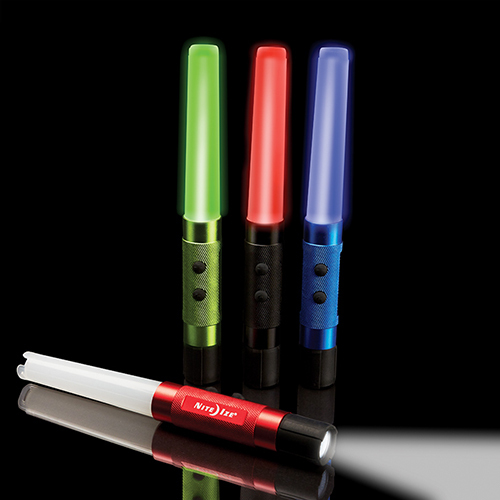
Nite Ize Stick
Okay, so maybe this isn’t the most practical of lights, but it’s a fun (who doesn’t want a light saber?!) accessory for evening group runs or night time jaunts in urban areas. Plus, it has a 60 lumens flashlight as well as the glowing lantern, thus satisfying the see and be seen requirements for heading out after dark. Plus the lantern can shed light on post-run gatherings. The Stick runs on one AA battery. (niteize.com)
Related Galleries

Bright Running Gear for Visible Nights

7 Runner-Friendly Lights for Nighttime Workouts

More Galleries
The post Running Gear: 6 Bright Lights to Take Back the Night appeared first on Competitor.com.
Turkey Trot Participation Still Booming
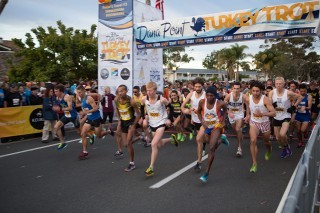
Turkey Trots are a fixture in many cities and towns on and around Thanksgiving. Photo: Kimble Photography
Running USA has studied the data and it is confirmed—Americans love to run races on Thanksgiving.
In 2014, there were 786,730 Turkey Trot finishers at one of 1,032 races put on around the U.S. on Thanksgiving, according to Running USA statistics. While the participation numbers are down slightly—the all-time high is 2012 with 798,508 finishers—the number of races was at an all-time high in 2014 and runners continue to turn out in large numbers to get a race in before the big feast.
Running USA also released a list of the 10 largest Thanksgiving Day races in the U.S., and number one by a long shot is the Silicon Valley Turkey Trot in San Jose, Calif., with 21,697 finishers (well more than the Detroit Turkey Trot’s 17,126 finishers). California had three races in the top 10, the only state with more than one.
Here’s the complete list:
10 Largest Thanksgiving Day Races, 2014
21,697 – Applied Materials Silicon Valley Turkey Trot (San Jose, Calif.)
17,126 – Detroit Turkey Trot (Detroit, Mich.)
13,282 – Cincinnati Thanksgiving Day Race (Cincinnati, Ohio)
12,279 – Delaware YMCA Buffalo Turkey Trot (Buffalo, N.Y.)
11,682 – Manchester Road Race (Manchester, Ct.)
9,476 – Atlanta Half Marathon and Thanksgiving Day 5K (Atlanta, Ga.)
8,086 – Oceanside Turkey Trot (Oceanside, Calif.)
7,975 – Mile High United Way’s Turkey Trot (Denver, Colo.)
7,794 – Dana Point Turkey Trot (Dana Point, Calif.)
7,789 – Festival Foods Turkey Trot (Green Bay, Wisc.)
MORE: Running USA
The post Turkey Trot Participation Still Booming appeared first on Competitor.com.
November 24, 2015
Insights to Excellence from the 50 Best Running Stores in America
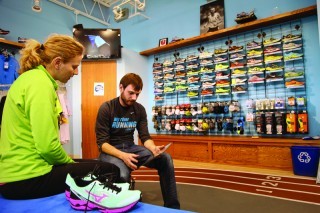
Big River Running
We interviewed owners and managers of some of the 50 best running shops in the U.S. for 2015, and here’s what they had to say about the business of running.
What qualities does a running store need in order to be successful?
“Hire, train and keep great people. Stay true to what you do. Love the sport. Enjoy helping people. Watch your inventory, stay on top of trends, and have a bit of luck.” –Eddie Johnson, A Snail’s Pace, Fountain Valley, Calif.
“The products we carry can be found just about everywhere these days, so the three qualities that I see as imperative to success are authenticity, passion and being community-centric.” –Matt Helbig, Big River Running, St. Louis
“In this day of specialty run, everyone does the basics when it comes to customer service. For Pacers Running to be successful, we have to be memorable. Be great, be authentic, be helpful and, most of all, be memorable.” –Chris Farley, Pacers Running, Arlington, Va.
RELATED: Get to Know the 2015 Finalists of the 50 Best Running Stores in America
Why buy running shoes at a run specialty store?
“We want running to be the best it can be in our community. Getting runners into the correct shoes, educating them about proper running form, showing them the latest in running products and building lasting relationships with the customer are important to keeping them involved in the sport. I don’t think you will find that in big box or general sporting goods stores. Purchasing shoes online for a new runner is also a huge gamble. We wonder how many runners we lose from the sport each year because they purchased the wrong running shoes and get injured.”
–Doug Alred, 1st Place Sports, Jacksonville, Fla.
“Determining the best shoe for an individual from among hundreds of options takes expertise. It’s a combination of art and science. You can’t get that online or in a non-specialty store.” –Kris Hartner, Naperville Running Company, Naperville, Ill.
“Have you ever stared at a shoe wall in a large retailer or the shoe page online? There is a ton of product out there. Some of it is amazing, some of it is good enough, and some of it just does not meet my standards. Our job as a specialty store is to do research, know our customers and carry products that are innovative, reliable, beautiful and consistent—for footwear, apparel and beyond.” –Genie Beaver, West Stride, Atlanta
“It’s all about listening to the consumer and finding what works best for them individually. Our five-step fit process, educated staff, wide selection of product, and low prices guarantee this. Also, shopping local saves jobs and helps the economy.” –Eddie Johnson
RELATED: 10 Reasons to Shop at Running Specialty Stores
What do you foresee being the next big trend in running shoes? In recreational running?
“The heritage shoe trend is gaining serious traction, and it would be interesting to see heritage/lifestyle shoe styling in technical running shoes. Saucony’s Life on the Run Collection hints at this new trend—an intersection between running and recreational running.” –Burke and Jon Beck, Red Coyote Running and Fitness, Oklahoma City
“Footwear technology is rapidly changing, perpetually becoming lighter, more durable and more adaptable. Midsole materials and upper designs move and fit more harmoniously than they have in the past and we expect to see that trend continue as vendors push the envelope to provide runners with the most natural-feeling experience. The wearable technology trend is also making its way into footwear. Shoes of the future will be more integrated with the technology many of us are already using to provide more advanced metrics on our biomechanics and the wear of the shoes themselves.” –Genie Beaver
RELATED: The 50 Best Running Stores in America for 2015
What tips do you have for runners when they shop at your store?
“If you can, bring your current running shoes and the socks you wear for running. It helps give us a better picture of what your needs might be. In addition to that, bring an open mind to trying something new and remember we may end up having you switch to a different size.” –Kris Hartner
“Don’t be intimidated by the fact we are a running store. We help all different types of customers, from marathon runners to customers who just want a pair of comfortable shoes to wear around town.” –Burke and Jon Beck
“We encourage runners to ask a lot of questions and try on different pairs of shoes. We even encourage runners to take their new shoes home for a trial run. If the customer is unsatisfied with how a product fits or functions, we will help them find a different product that will work.” –Chris Lampen Crowell, Gazelle Sports
RELATED: Top Shops—Past Winners of The Running Store of the Year Honors
The post Insights to Excellence from the 50 Best Running Stores in America appeared first on Competitor.com.
Get to Know the 2015 Finalists of the 50 Best Running Stores in America
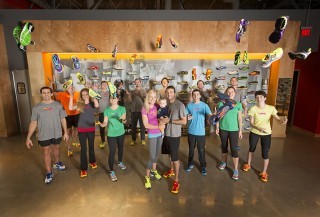
Owners Burke and Jon Beck with their son Duncan and the entire staff of Red Coyote and Fitness. The store is in the final four for the third time in the past five years.
One of these four shops will be revealed as the 2015 Running Store of the Year on Dec. 3 at the Running Event trade show in Austin, Texas, based on criteria that include best retail environment, shoe-fitting checkout process, community service and credit ratings from vendors.
RELATED: The 50 Best Running Stores in America for 2015
Red Coyote Running and Fitness
Oklahoma City
Owners: Burke and Jon Beck
Only five years old, Red Coyote Running and Fitness makes it to the 50 Best list for the fifth time and to the final four a third time. The 5,500-square-foot store is bright, clean, well-merchandised and has hosted a wildly successful Newbie Running Program that has attracted hundreds of beginner 5K runners since its implementation. Its name was even inspired by the owners’ runner dog Pancho who resembles a red coyote. “Over a beer on our first date, Jon and I talked about how we would both love to own a running store someday,” says Burke Beck. In 2010, they moved back to Oklahoma City, Burke’s hometown, to open Red Coyote.
West Stride
Atlanta
Owner: Genie Beaver
West Stride is Atlanta’s only woman-owned specialty running store that serves the running and athletic needs of both men and women. However, with Genie in charge, this store has helped support and grow Atlanta’s female runners by hosting women-specific shopping events and clinics, and primarily focusing their outreach to women, the northwest Atlanta community and youth involvement in running. “While there were and still are great stores in my area, I wanted one that was different,” Genie says about the idea behind West Stride. “One with an appreciation and understanding of competitive track and field, but also a store that is welcoming to all runners and walkers, particularly to women.”
Fleet Feet Rochester
Rochester, N.Y.
Owners: Ellen Brenner and David “Boots” Boutillier
From an original 3,000-square-foot space to a new, modern 9,000-square-foot location, this store has grown up over the past 11 years. However, four months after opening, Ellen and David had to lay off all their staff and work Christmas week to make sure the business could survive. Due to their hard work and their attentive and reliable staff, they bounced back and have built a thriving store around a supportive, close-knit community of runners. “There is always something going on, whether it’s an in-store vendor event, group run, wear-test opportunity or fitness class,” Ellen says. “There is constant energy.”
A Snail’s Pace
Fountain Valley, Calif.
Owner: Eddie Johnson
Originally founded in 1979, this store actually started as a franchise of Loeshorn’s for Runners. It then moved to private ownership in the late 1980s and the name was changed to A Snail’s Pace with the flagship store in Fountain Valley. Heavily involved in the local running community, this store has an active run club, training programs from 5K to marathon distances, works with high school and college track and field and cross country coaches, and provides pacers for several large local races such as the Surf City USA Marathon, OC Marathon and Long Beach Marathon.
RELATED: Top Shops—Past Winners of The Running Store of the Year Honors
The post Get to Know the 2015 Finalists of the 50 Best Running Stores in America appeared first on Competitor.com.
Ryan Hall's Blog
- Ryan Hall's profile
- 21 followers



